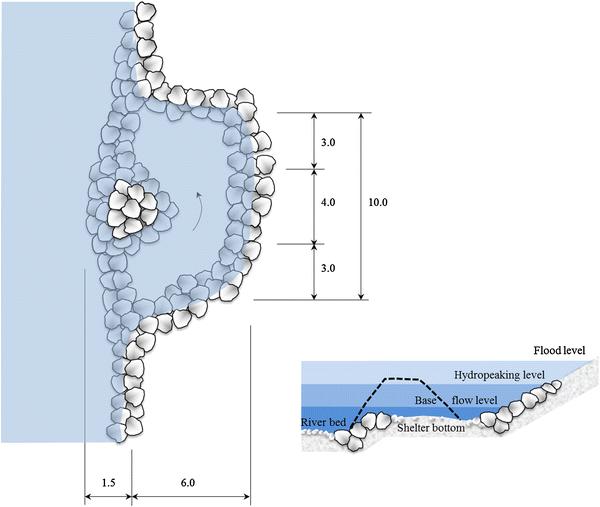River Fish: Seek Cover!

© 2014 Wikipédia
Hydraulic power generation endangers fish downstream of dams due to reservoirs and the release of large amounts of water. The increasing energy demand could further intensify this phenomenon. A doctoral student at EPFL has developed shelters that allow fish populations to find refuge during periods of intense fluctuation.
One third of the energy produced in Switzerland comes from hydroelectric power plants, which means that over a thousand kilometers of waterways are exploited to generate electricity. What’s more, these production levels are expected to rise with the end of nuclear power.
By holding and releasing large amounts of water, dams cause significant variations in water depth and velocity. These swells effect the flora and fauna on which young trout feed. The high speed of the flow also dredges the riverbed by removing the gravel that fish latch onto, leaving only large stones behind. When their habitat is dramatically changed and continues to undergo sudden and repeated changes, they can no longer migrate.
Water Quality Indicator
In collaboration with EAWAG, Jean-Marc Ribi, a doctoral student in the Laboratory of Hydraulic Constructions (LCH) and professor at the College of Engineering and Architecture of Fribourg, has devised a way to protect young trout. He developed recesses to be installed in the banks of channeled rivers. These deep lateral alcoves, each roughly 15 meters long, provide tranquility for their guests. Installed in a staggered configuration along one kilometer downstream of dams, these shelters could save endangered wildlife. “Taking an interest in the well-being of the fish might seem trivial, but fish provide a valuable indicator of water quality.”
The shelters conceived at EPFL also remove another threat: beaching. Unfortunately, if the trout venture near the shore, they can become trapped in water that suddenly becomes shallow. With turbines and successive reservoirs of hydroelectric power plants, the water level can vary drastically several times a day, depending on energy needs. This is one of the important points which must be addressed by hydroelectric companies in order to reduce the amplitude of the fluctuations.
Fish as instinctive hydraulic engineers!
Laboratory tests were performed in an old hydroelectric plant in Fribourg. “We needed running and untreated water to raise our group of twenty fish,” says Jean-Marc Ribi.
When the first tests were conducted in the canal built for this purpose, only 35% of the young trout chose to hide in the shelter. “We cannot force the fish to choose one passage rather than another, so we had to play around with the animals’ natural instincts.”
The trout chosen for experimentation reside in mountain streams, so they thrive in water that is fresh and highly oxygenated. Those in the salmon family (brown  Salmon trout) swim upstream. If we want to attract them to a saving niche, diversity in water velocity between the river and the shelter is paramount.
Salmon trout) swim upstream. If we want to attract them to a saving niche, diversity in water velocity between the river and the shelter is paramount.
12 configurations were tried in the test channel to find the ideal shape. It is characterized by the presence of a central island in the refuge which diverts a fraction of the main flow to form a current that attracts the fish. With this configuration, almost 90% of young trout sought refuge in the shelter.
Researchers must now confirm the proper functioning of these fish shelters in a natural setting. The Thiele River, at the entrance of Yverdon-les-Bains, is being considered as a venue to test this approach in the field.